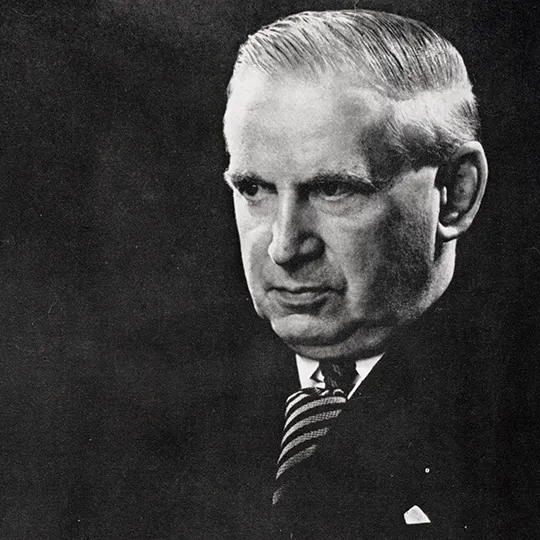
Professor Sir Edward Appleton
Nobel Prize-winning physicist
Biography
Professor Sir Edward Appleton was a pioneering physicist and Nobel Prize-winner. He is best known for discovering the Appleton layer or ionosphere (the layer above Earth’s surface with the highest electron density). This remarkable discovery would later lead to the development of the radar.
Sir Edward was born in Bradford in 1892 and educated at Hanson Grammar School. In 1911, he was awarded a scholarship to the University of Cambridge, where he studied Natural Science with Physics. While at Cambridge, Sir Edward was a member of the masonic Isaac Newton University Lodge.
When World War I broke out, Sir Edward joined the West Riding Regiment and he was later transferred to the Royal Engineers.
In 1924, Sir Edward’s academic interests led him to King’s where he was Professor of Physics until 1936. While at King’s, Sir Edward began his revolutionary research into radio signals, measuring the strength of radio waves between Cambridge and London. He soon found that the signals were constant during the day yet varied at night. After digging deeper, Sir Edward discovered that this was due to a second reflecting layer in Earth’s atmosphere.
With help from a BBC transmitter, Sir Edward set out on a mission to prove the existence of this layer. His experiments led to the discovery of yet another layer in reflecting short radio waves during the day as well as at night. This came to be known as the Appleton layer – an extraordinary find which now enables communication between people in the UK, Australia and America.
During World War II, Sir Edward served as Secretary for the Department of Scientific and Industrial Research for the British Government. His work inspired engineer Robert Watson-Watt, who used Sir Edward’s scientific findings to develop radar technology.
The post-war years led Sir Edward to the University of Edinburgh, where he was Principal and Vice-Chancellor until his death in 1965. In 1947, he was awarded a Nobel Prize in Physics in recognition of his outstanding contribution to science and technology.
